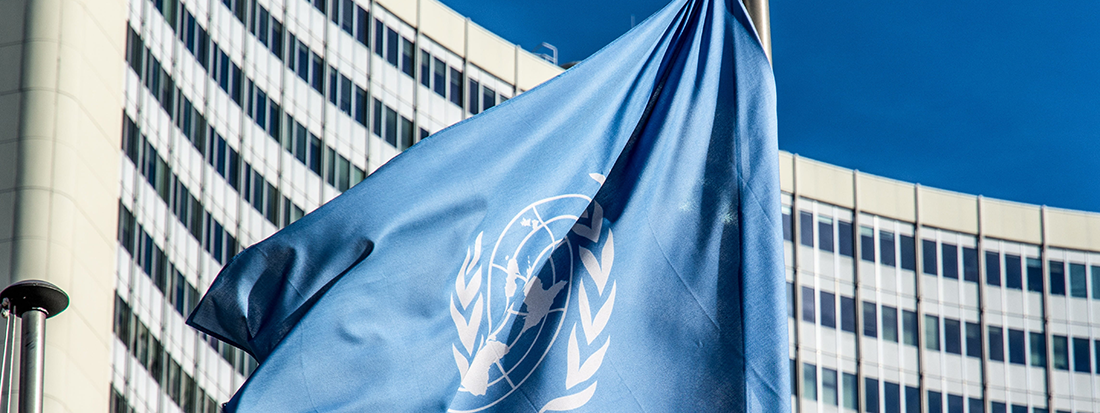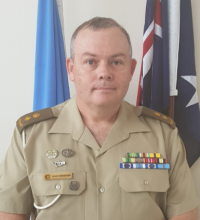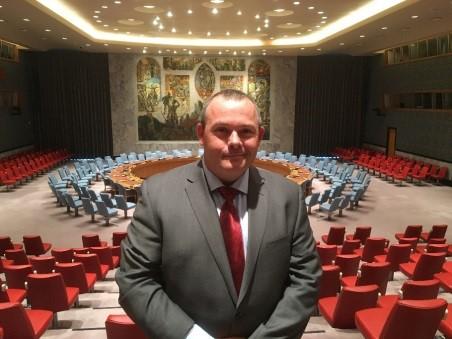
Service in the United Nations (UN) is one of the most complex duties any ADF officer can be called upon to perform. Unfortunately, it is sometimes one of the most undervalued experiences of an officer’s career, as UN missions are often perceived subordinate to conventional global coalition operations. Since September 11th 2001, the ADF has focused its operational efforts in supporting US coalition efforts in both Iraq and Afghanistan. This has meant UN service has taken a back seat over this period with only a very small fraction of personnel deploying[i] and few being retained for their UN expertise. UN Service today is poles apart from the paradigm of deployment we have become accustomed to under a US coalition framework. Accordingly, if the ADF was to re-invigorate its support to the UN it should establish a pool of subject matter experts and ensure we appropriately adapt our operating philosophy. My aim is that this account of my three years’ service at the military-political interface with the UN illustrates the unique benefits of this service and further poses the question - where should this experience be re-invested back into the ADF.
Following a year deployed as a Military Advisor to the United Nations Assistance Mission in Afghanistan (UNAMA) in 2014-15, I began my secondment to UN HQ in New York on 4 February 2016 [ii]. My introduction included a “fire hosing” of UN HQ’s structures, cultures and decision-making processes that differed vastly from the ADF’s.
A seconded officer with UN HQ must agree to be deployed at short notice for up to three months a year to any UN mission (established or emerging). In mid-April 2016, I was appointed as the Military Advisor to the Special Envoy for the Secretary General on Syria, Mr Steffan de Mistura, to support the Syrian peace talks in Geneva, Switzerland [iii]. Further, I was to represent the UN in a 24-hour combined HQ staffed by US, Russian and UN personnel to monitor alleged violations of human rights inside Syria. As a snapshot of the nature of UN operations, our improvised coordination centre received daily claims of war crimes from both sides over WhatsApp and Facebook Messenger, complete with voice, text and moving/still images.
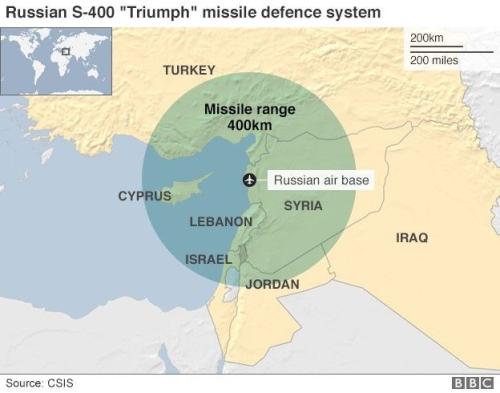
I found this assignment fascinating and it reinforced to me that the ADF’s continuum of professional military education and operational experience had prepared me well for such a high profile and strategic role. As a ground-based air defence officer, I was also able to provide technical advice to Mr de Mistura on the implications of Russian S300/S400 deployment to Syria [iv], and UN force protection within an environment full of improvised threats. I was able to attend the local Anzac Day service on the shores of Lake Geneva, and discuss Australia’s national objectives in Syria with our DFAT consular representatives. The takeaway from this experience is that as an ADF Officer you are very well trained. Be confident, militarily appropriate and aware of the bigger political picture. Stick to the facts and what you know; you may be surprised by how welcome your assessment of a situation presents to a senior political official.
Early in my tenure, beginning in May 2016, I was assigned as the lead planner for the United Nations Truce Supervision Organization (UNTSO) and the United Nations Disengagement of Forces (UNDOF). In 2014, the Syrian civil war triggered the withdrawal of the UNTSO and UNDOF to the Israeli side of the truce line. As lead planner, I had the task of redeploying UN troops back into the Syrian side of the Golan Heights (Camp Faouar).Through various planning groups, I began to grasp that my success as a UN military planner would depend on my relationship with the Political Officers of the Office of Operations (OO) in the Department of Peacekeeping Operations (DPKO). I would need to convince these “gatekeepers” of the relative benefit of any proposed military options. Thankfully, they endorsed a planning reconnaissance into the occupied Golan in August 2016, a move also supported by the respective Under Secretary-Generals DPKO, Department of Field Support (DFS) and the Department of Safety and Security (DSS).
Based on UNSCR 350, dated 31 May 1974, UNDOF will use its best efforts to:
- Maintain the ceasefire between Israel and Syria.
- Supervise the disengagement of Israeli and Syrian forces.
- Supervise the agreement & its protocol with regard of the areas of separation (AOS) and limitation AOL).
AOL – extending each side of the A and B Line for 25 km –with restrictions on Military personnel and equipment.
AOS – Area contained by A and B Lines.
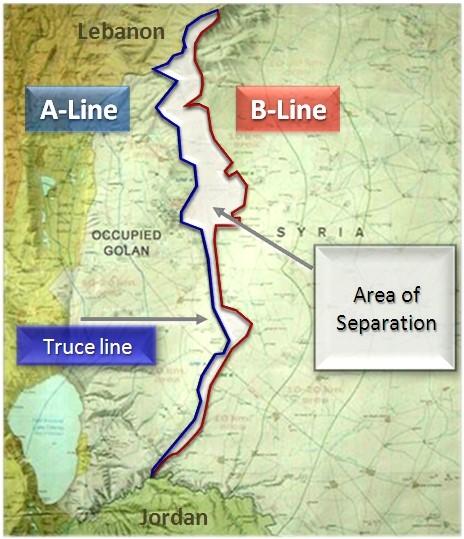
Map of UNDOF AO[v]
In early August 2016, we flew into Beirut and drove to southwest Damascus. A hotel compound, from where I could view the Battle for Darayya, was my new, makeshift Forward Operating Base (FOB). I was extremely fortunate to lean on my fellow military planner from Greece, and a Swiss mentor who had previously been the Deputy Chief of Staff to UNTSO and who was on good terms with Brigadier General Younis, the Senior Syrian Arab Delegate (SSAD). The SSAD is the single point of contact between the UN and Syria for UNDOF issues, and I realised this relationship would need to be built on trust and credibility. Furthermore, this relationship would need to form a key component of any redeployment of UN forces.
The reconnaissance revealed that the UN facilities had been effectively destroyed, and the threat environment was very unpredictable and multi-dimensional. There were many groups with competing agendas, and little likelihood of any short-term peace. On the plus side, the Syrian government forces undertook their hosting security obligations to UNDOF seriously – this was demonstrated by their dynamic control of our transit through the Occupied Golan, allowing us to visit various abandoned camps and positions whilst avoiding threat groups that could have actively targeted us.
The second half of the reconnaissance saw us transiting back though Lebanon into Israel to engage with Israeli Defence Force (IDF) officials, and to gain a mission perspective from the Israeli-occupied Golan (or A Side). Once again, the various personalities, motivations and realities of excess troops that had been deployed without meaningful task played heavily into the options that would be prepared for USG DPKO consideration. A key lesson from this experience remains knowing when to transmit and when to receive – Interaction with the IDF and SSAD are a test for any officer. Being able to sit back and passively learn from how my colleague and mentor managed these relationships set me up for future success. Sometimes on the job experience is the best way to be educated – when you get that opportunity, embrace it.
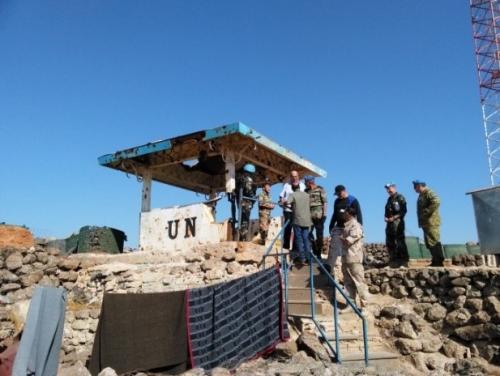
On our return to UN HQ in September 2016, we presented a decision brief to the Under Secretary Generals (USGs) for DPKO, DFS and DSS. Our key theme was the risk to the UN’s reputation if it did not re-establish its footprint amongst the communities of the Golan that had lived amongst and relied on it since 1974. Despite the risk-averse stereotype some people might have of the UN, the USGs agreed with our recommendation to redeploy UNDOF and they were satisfied with the strategic plan, control measures, resource projections and timelines. They endorsed a contracted “clean up” of Camp Faouar and deployment of a guard and Engineering/Logistics force to secure and re-establish Camp Faouar for full redeployment.

The UN flag was re-raised in mid-November 2016 on the Syrian B Side for the first time in over two years. The UN Security Council saw this as a welcome success, given many other missions (including the UN Mission in South Sudan) and the pending Santa Cruz report[vi] were all highlighting systematic failure. A key lesson here is to fight for a detailed reconnaissance in the mission. Political decisions are often balanced against the ability of the military officer to persuade and convince – having walked the ground and engaged key players in UNDOF we were able to brief with confidence and answer all questions in detail, ultimately convincing our high-level audience.
The UNDOF’s phased return to full deployment was drafted in New York – it applied the “ink spot” approach and planned to slowly increase the UN positions and Observation Posts in a deliberate manner, taking account of the threats. The redeployment began in the north and extended south. It depended on the Syrian Arab Armed Forces (SAAF) maintaining (and extending) control within the ‘B’ Side Area of Limitation (AOL).
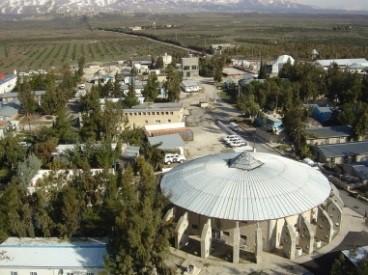
Back to Syria
Over the period 28 April to 8 May 2017, the Secretariat conducted another detailed reconnaissance to fully develop Phase 2 of the re-establishment of UNDOF into the AOL and AOS. The below maps [vii] demonstrate the evolving operational environment, with Darayya and Khan Ah She both falling to Syrian Government control, which can be attributed to heavy Russian military support in the ongoing civil war. In 2016, armed opposition groups had held territory with the intent to threaten Damascus. By early 2017, they had been forced back to the Bayt Jinn enclave and into the AOS on the Golan.
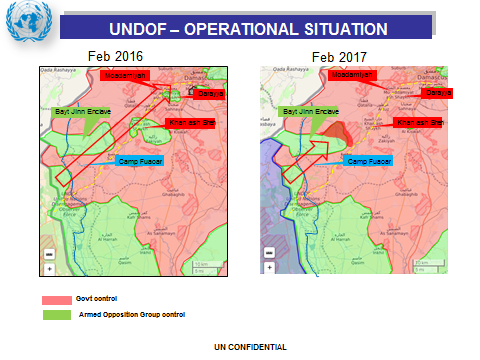
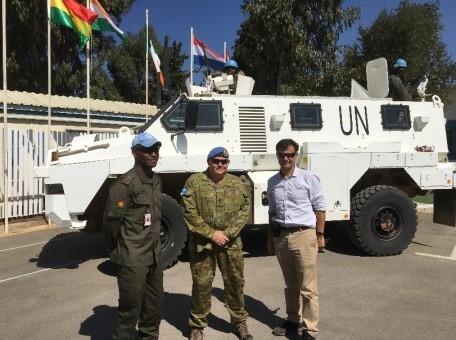
This reconnaissance allowed detailed field assessment of abandoned Observation Posts and UNDOF Positions to the South of the Mt Hermon complex, and more detailed development of a conditions-based approach to expanding UN control and influence throughout the Golan (along with identifying the accompanying budget and force generation required to support the plan). This phase also included the build-up of forces at the rebuilt Camp Faouar, complete with a newly generated Nepalese Mechanised Combat Team and the movement of the Commanders Reserve (an Irish Company group mounted in 8-wheeled MOWAG Piranha vehicles [viii]) from Camp Zoiani (who had been deployed from the A Side - Israel). Additionally, five Australian Bushmaster vehicles had been deployed to support the Fijian contingent at Position 80 (a key A Side position held in close proximity to anti-Government and Daesh affiliated forces).
The field assessment had been invaluable in establishing “ground truth” for the UN executives in New York and they saw the gradual improvement in the mission as a strategic success. By early 2018, Phase 2 planning had been largely completed (where conditions allowed) and the next phase of planning would be another HQ Technical Assessment to plan for UNDOF (April/May) to fully deploy to the entire AOS.
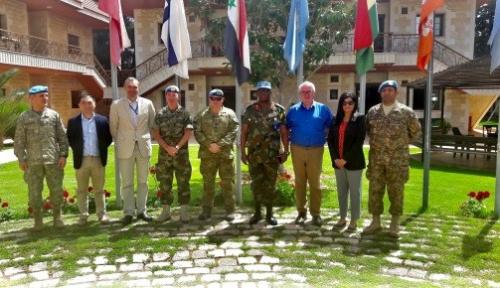
This included the south, where Anti-Government Forces and Daesh affiliate forces had been located for some time. This time I was entrusted with leading a cross-departmental assessment team and determining the identification of locations, required forces and capabilities [ix]. This was done in partnership with the UNDOF Force Commander and was very successful; however, planning to a timeline was very difficult since there was no indication that these elements would be removed in the short term.
The lessons from my third field assessment into Syria were a confirmation that investment in relationship and building of trust is paramount to success – you cannot cut corners here – as my experience with the SSAD demonstrated. Additionally, you do not always neatly fit into the ADF mould when you are a seconded officer – the employment and freedoms of action you employ must fit your UN mandate, as the leader of this cross-department team, I could not have my movements restricted (as was suggested to me by the ADF COMASC for OP PALADIN). Risk must still be managed and national transparency expressed – but as a seconded officer, this risk is managed by the Secretary General and agreed to by the Commonwealth of Australia.
Clearance of the Area of Separation – Golan Heights 2018 [x]
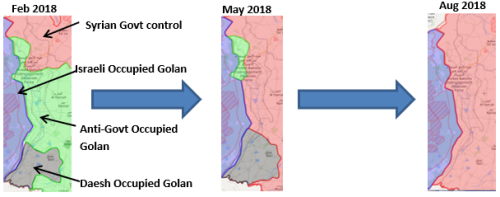
History would show that the months of May through August 2018 would deliver this clearance, as the SAAF, supported by Russian forces, swept through the Golan (with apparent Israeli agreement). This provided the conditions for a full deployment of Phase 2 and the start conditions for Phase 3 of a full UNDOF redeployment. Further analysis of the circumstances reinforces that this situation became “unlocked” due to political action, and that military action is but one of the tools of diplomacy. Today, the UNDOF has further executed Phase 3 and is delivering on its mandate in a full and thorough manner. The lessons learned from this withdrawal have been shared and this redeployment has provided opportunity to evolve The UN’s deployment philosophy and ensure other missions take preventative measures to avoid withdrawal where possible.
The lesson here is that political “stalemate” often has an unpredictable timeline. The series of events leading up to this time included the destruction of a Russian transport aircraft that was used as a shield by an Israeli F16 to prevent a Syrian missile targeting it . It is assessed that this incident resulted in extreme pressure on Israel to “clean out” the complex “inhabitants” of the AOS – who until now had arguably operated to the “operational advantage” of Israel. Until this time, any SAAF advance into the AOS/AOL or the targeting of forces in these regions that resulted in a “spillover of fire” to the A Line, was also met with active deep targeting of SAAF troops and facilities. This targeting did not occur when a force of Russian military police and SAAF conducted clearance operations in the AOS/AOL from May-August 2018.
My observation throughout my UN experience is that, as military professionals, we are often guilty of straying from our lane and not understanding the full picture. Furthermore, we like to deal in accountability and absolutes. UNDOFs task verb remains “Use best efforts” – how can one not achieve that mission? What is the end-state? What are the measures of success? These all remain good questions and maybe one day the UN Resolution will evolve to include more detail that we identify with as military professionals – until then the UN remains an important part of global order and stability and one I believe the ADF should continue to support in accordance with our government’s direction.
During my three years seconded to UN HQ I was deployed to Syria, Israel and Lebanon (UNDOF/UNTSO/UNIFIL), Mali (MINUSMA), Cyprus (UNFICYP), Libya (UNSMIL) and Kashmir (UNMOGIP). My ADF knowledge and experience was widely used and appreciated within the UN system – as has the service of other ADF seconded members (past and present). In my assessment, service in the UN HQ presents real opportunity to an ADF 05/06 to shape and influence at a level exponentially greater than their relative seniority (certainly, only available to star ranked officers within the ADF umbrella). These opportunities should be championed by respective career agencies and UN expertise should be capitalised on from returning Seconded Officers.
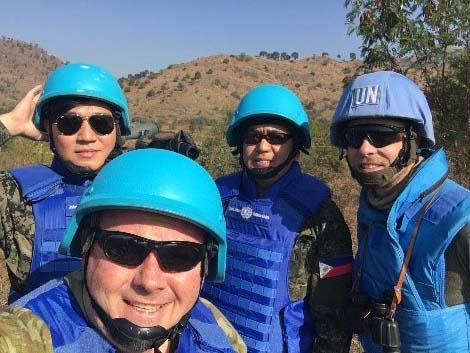
| 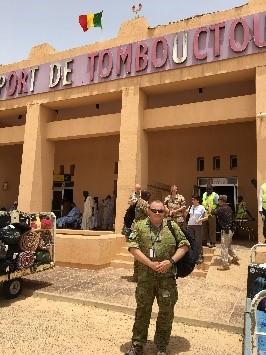
| 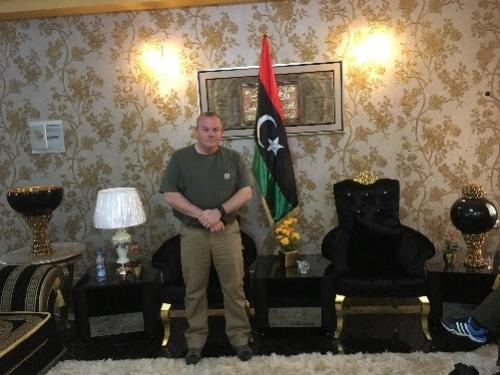
| 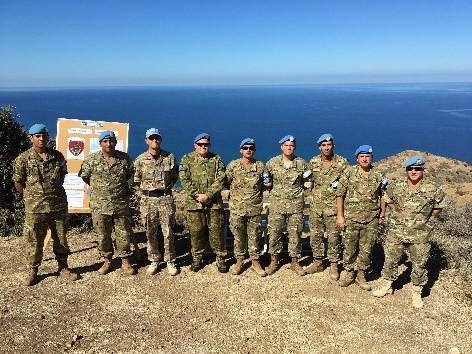
|
| Kashmir Line of Control - Bhimber | Timbuktu - Mali | Tripoli - Libya | Kokkina Sector West - Cyprus |
i PMKEYs data indicates that only 495 ADF personnel deployed on a UN mission since 2010
ii UN Secondment includes a global recruitment of often hundreds of candidates competing for a single position. It requires written application, written examination and panel based competency interview before eventual selection. The ADF has only provided 10 seconded Officers to the Department of Peace Operations since 2006.
iii Summary of peace talks of 13-27 Apr 2016 https://m.reliefweb.int/report/1504171/syrian-arab-republic/media-statement-office-special-envoy-syria-27-april-2016-enar?lang=es
iv Image provided from BBC News : https://www.bbc.com/news/world-europe-34976537
v UNDOF Area of Operations provided by Official UN Website : https://undof.unmissions.org/background
vi The UN Inspector General - General Santa Cruz report into Peace Operations Dec 2017 https://peacekeeping.un.org/sites/default/files/improving_security_of_united_nations_peacekeepers_report.pdf
vii Map generated by the Office of Military Affairs Assessment Team using data provided by : https://syria.liveuamap.com/
viii https://en.wikipedia.org/wiki/Mowag_Piranha
ix https://undof.unmissions.org/unhq-technical-assessment-team-visit-undof-may-2018
x Snapshots taken from data generated by: https://syria.liveuamap.com/
Please let us know if you have discovered an issue with the content on this page.
Comments
Start the conversation by sharing your thoughts! Please login to comment. If you don't yet have an account registration is quick and easy.
